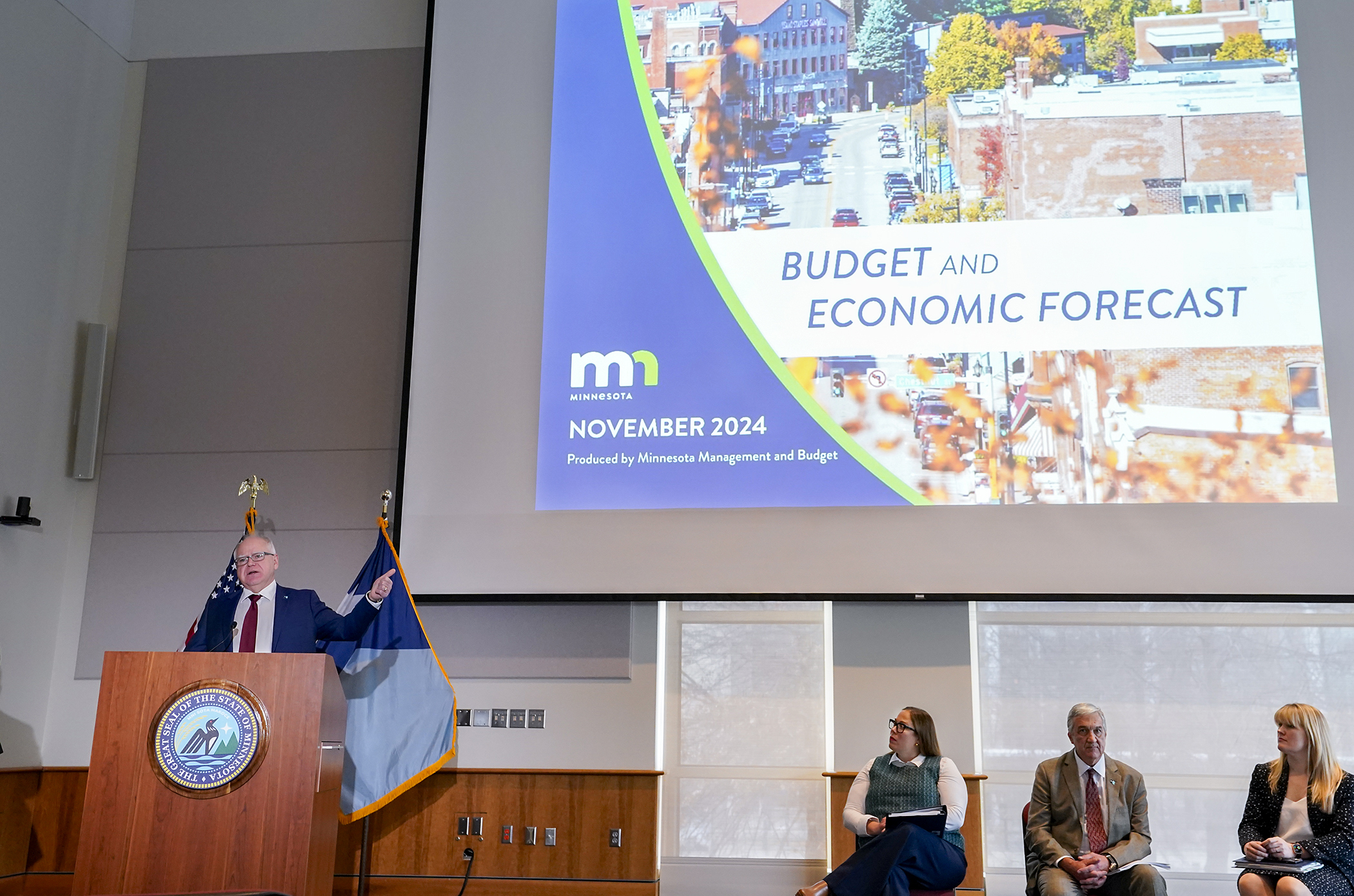Paper war: How a state office is being flooded with bogus liens
In 2013, a Brooklyn Park couple pleaded guilty to filing $114 billion in fake liens against a number of public officials, including Hennepin County Attorney Mike Freeman and former Hennepin County Sheriff Richard Stanek.
“A lot good people in the public and private sectors suffered because of the defendants’ selfish engagement in financial and economic terrorism,” Ramsey County Attorney John Choi said at the time.
A lien is a form of security interest over property to ensure payment of debt or performance of another obligation. A fraudulent lien describes a lien that has no legal basis or is based upon false, fictitious or fraudulent statements or representations.
Under current state law, a victim’s lone recourse is to go to civil court to get the liens removed. The Office of the Secretary of State must accept all filed liens, regardless of their validity.
“We don’t have the authority to look at something that is pretty obviously a fraudulent filing and stop it,” Secretary of State Steve Simon told the House Commerce Committee March 11. “This wouldn’t be a problem if we didn’t routinely, and in growing numbers, receive fraudulent filings.”
Fraudulent liens are growing nationwide, Simon said, and more perpetrators are setting their sights on Minnesota because 24 other states have passed laws to stop them.
Sponsored by Rep. Laurie Halverson (DFL-Eagan), HF4042, as amended, would give Simon’s office the authority under commercial law to verify filings to prevent such fraudulent liens.
In part, the bill would create a pre-filing remedy for financing statements filed with the intent to harass or defraud a debtor. The office would also have the ability to reject a filing, accept an affidavit of wrongful filing from a debtor and reinstate a filing.
A person would be prohibited from filing a record with the office if not authorized, the record is not related to an existing or anticipated transaction governed by Article 9 of the Uniform Commercial Code, and the record is filed with the intent to harass or defraud the person identified as the debtor in the filing. The penalty would be a gross misdemeanor for a first offense and a felony for subsequent offenses.
The bill includes a process to appeal improper rejections, provide the debtor with administrative recourse with the office and give the secured party six months to commence a legal action in court to reinstate the filing.
Paul Hodnefield, associate general counsel for Corporate Service Company, who specializes in Uniform Commercial Code search and filing issues, has worked with a number of states to implement laws to prevent bogus filing. He said the bill would strike a good balance between efficiency for the filing office and reliability for filers and searchers.
Approved, as amended, by the committee, the bill awaits action by the House Public Safety and Criminal Justice Reform Finance and Policy Division. However, the Legislature’s focus the coronavirus pandemic makes unlikely to pass this session.
A companion, SF4387, is sponsored by Sen. Mark Koran (R-North Branch) and awaits action by the Senate Judiciary and Public Safety Finance and Policy Committee.
‘We’re like a filing cabinet’
Simon said his office is seeing an increase in bogus liens designed to retaliate or harass people.
“We’re like a filing cabinet,” Simon said. “We file whatever they give us.”
For example, a prisoner once filed a $3 billion lien against a Corrections Department employee. Sometimes disgruntled constituents try to make life difficult for an elected official by placing liens against them for $100,000, $1 million or even $1 billion.
“As silly as that sounds, that has been done in Minnesota,” Simon said. “So not only is that filing now public information, but these bogus liens cause actual problems for people when they go to buy a home or make some sort of other major purchase and suddenly find that they have a bunch of liens on them that are phony and fraudulent.”
‘Straw man filings’
Another problem is “straw man filings” by anti-government extremists who believe they are sovereign from the U.S. and need not answer to government authority.
Simon called it, “a movement in Minnesota and all over the country that has some pretty offbeat, strange theories about the world.”
According to the FBI, such people have been known to not pay taxes, issue warrants for judges and cops, and harass public officials with frivolous lawsuits and fraudulent liens.
Some believe that when they’re born, the federal government creates a “straw man account” at the U.S. Treasury to represent the monetary worth of each citizen ranging from hundreds of thousands to millions of dollars. And they believe a Uniform Commercial Code filing statement allows them to claim an interest in, and get access to, that secret account.
But often that filing is a springboard for all kinds of fraud, such as mortgage fraud or bogus liens.
Among the telltale signs of a bogus filing:
- using green ink or a red ink thumbprint to represent some kind of blood oath;
- excessive pages – sometimes hundreds – of documents filed;
- fake designations in front of party names;
- references to the Bible, constitution or foreign treaties;
- signatures followed by the phrase “sovereign living soul;” and
- copies of birth certificates or Social Security cards unnecessarily submitted with filings.
‘We don’t have any bogus filings on any of you that we know of’
Minnesota lawmakers criminalized the filing of fraudulent liens to retaliate against officials in 2006, but haven’t done anything to prevent such liens from being filed in the first place.
At the time, several lawmakers had been victims of such filings, according to Bibi Black, legal counsel for secretary of state’s office.
“We don’t have any bogus filings on any of you that we know of,” Black told the commerce committee in March. “But this is a real problem that affects not only legislators but rank-and-file Minnesotans.”
Related Articles
Search Session Daily
Advanced Search OptionsPriority Dailies
Ways and Means Committee OKs House budget resolution
By Mike Cook Total net General Fund expenditures in the 2026-27 biennium will not exceed a hair less than $66.62 billion.
That is the budget resolution approved Tuesday by the House Ways...
Total net General Fund expenditures in the 2026-27 biennium will not exceed a hair less than $66.62 billion.
That is the budget resolution approved Tuesday by the House Ways...
Minnesota's budget outlook worsens in both near, long term
By Rob Hubbard It looks as if those calling for less state spending could get their wish, judging from Thursday’s release of the February 2025 Budget and Economic Forecast.
A state su...
It looks as if those calling for less state spending could get their wish, judging from Thursday’s release of the February 2025 Budget and Economic Forecast.
A state su...